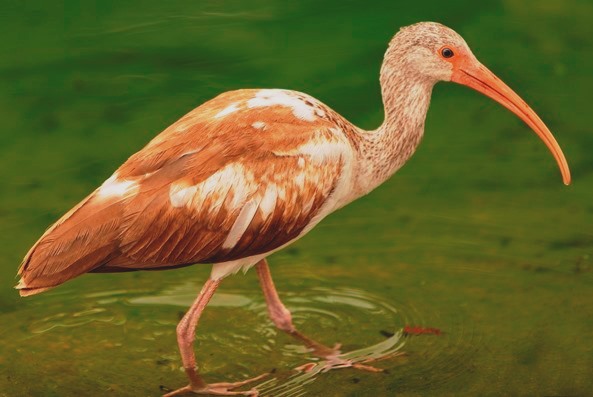A clade of ancient birds known as lithornithids (chicken-sized, long-beaked birds), who lived approximately 40–70 million years ago, possessed a unique vibrotactile bill-tip organ that allowed these birds to detect vibrations in the ground. The ability to detect minute, ground-based, mechanical vibrations (via mechanoreceptors embedded in the tip of the beak) is termed remote-touch and was likely a probe-foraging behavior used by lithornithids to locate and capture prey. Now, scientists have discovered the same remote-touch sensory capability in three groups of extant birds: ibises, kiwi birds, and sandpipers (including related shorebirds). When these birds push their bills into the ground, their bills discern vibrations by either of two means—direct vibrational sensing of prey movement in the soil or through sensing of sound waves reflecting off hard-shelled prey in the ground. Through this sensory technique, probe-foraging birds can identify prey without using visual or olfactory cues. Moreover, probe-foraging birds possess an expanded area of the brain that helps to process remote-touch signals. See also: Aves; Behavioral ecology; Brain; Mechanoreceptors; Predator-prey interactions; Sensation; Sense organ; Vibration

Anatomically, the bill-tip organ of probe-foraging birds consists of a series of small depressions or pits in the bones of the birds' beaks. The depressions contain densely clustered mechanoreceptors, which are sensory nerve cells—termed Herbst corpuscles—that detect vibrational movements. Ornithologists compared the fossilized beaks of 50 ancient bird species, including four species of lithornithids, with the beaks of a range of modern-day birds. The scientists observed distinct pitting patterns—indicative of the bill-tip sensing organ—in the beaks of the lithornithid fossil species and living kiwis, ibises, and sandpipers. The evidence therefore suggests that lithornithids and modern kiwis, ibises, and sandpipers likely had the same probe-foraging sensory abilities due to the bill-tip organ. See also: Fossil; Nervous system (vertebrate); Neurobiology
Vestigial remnants of the ancestral remote-touch organ are found in a number of other extant birds, including ostriches, emus, cassowaries, rheas, and their relatives (ratites). Over the course of evolution, though, the structural components of the sensory bill-tip organ in ratite birds (with the exception of the kiwi) became functionally redundant or unnecessary, and the probe-foraging trait was lost. Researchers surmise that the remote-touch capability may have developed earlier in avian evolutionary history and possibly even among nonavian dinosaur ancestors. For example, snout tactile specializations similar to the bill-tip organ have been noted throughout the evolutionary line of crocodiles and alligators. See also: Animal evolution; Avian evolution; Crocodylia; Ratites; Sensory structures in crocodilians





